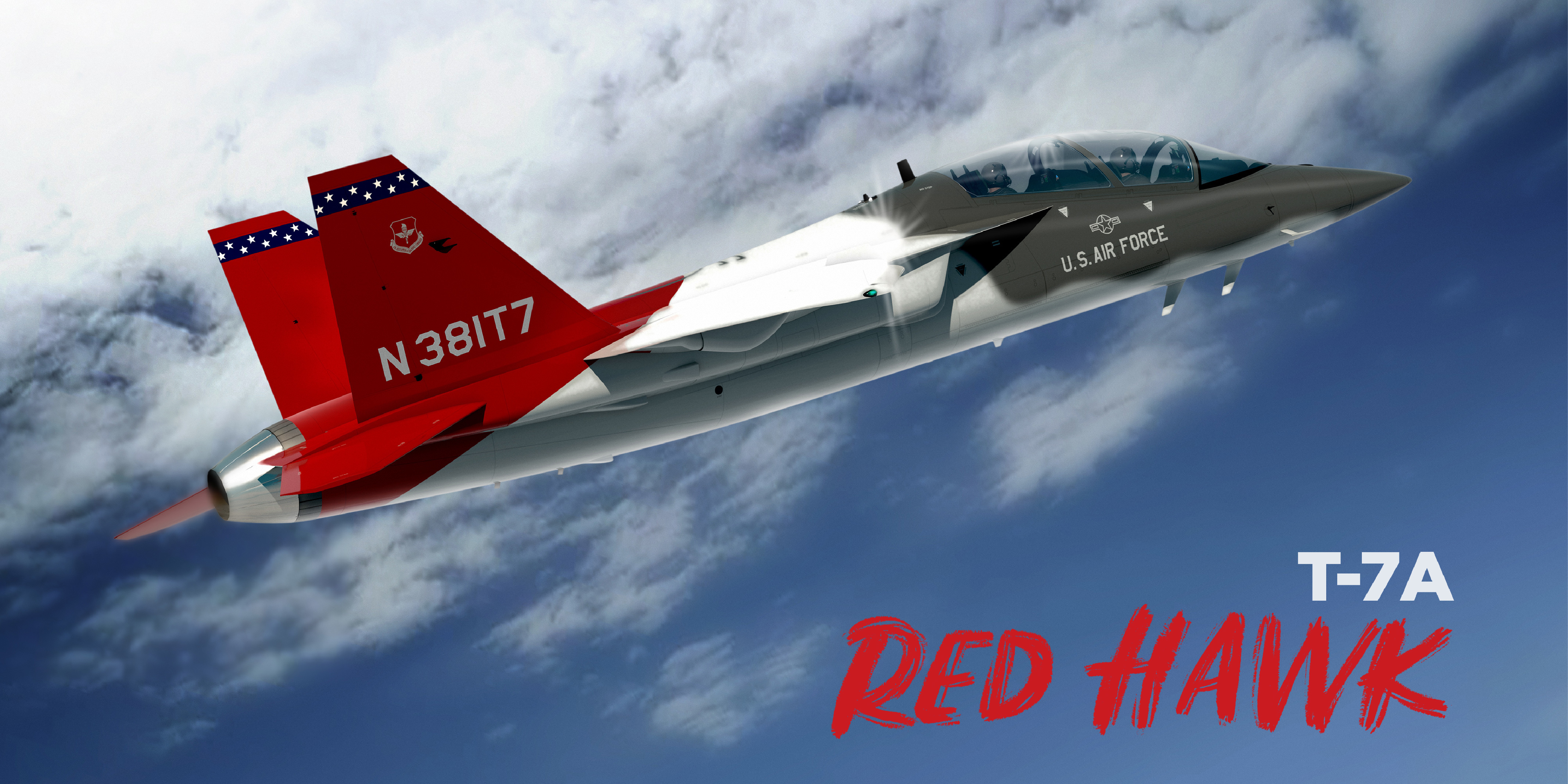- A new fleet of Air Force training aircraft honors the Tuskegee Airmen, the first African-American US Army Air Corps squadron that escorted bombers during World War II.
- The celebrated squadron painted the tails of their aircraft red, earning the nickname “Red Tails.” They also flew the Curtiss P-40 Warhawk – hence the “Red Hawk” tribute.
- The Air Force has put in an order for 351 of the T-7A aircraft, made by Boeing. They’ll be delivered in 2023.
- Visit Business Insider’s home page for more stories.
Acting Secretary of the Air Force Matthew Donovan announced on Monday that the US Air Force would introduce a new training aircraft named for the Tuskegee Airmen, the first African-American squadron in the US Army Air Corps.
“The name Red Hawk honors the legacy of Tuskegee Airmen and pays homage to their signature red-tailed aircraft from World War II,” Donovan said at the 2019 Air Force Association’s Air, Space and Cyber Conference in National Harbor, Maryland on Monday.
“The name is also a tribute to the Curtiss P-40 Warhawk, an American fighter aircraft that first flew in 1938 and was flown by the 99th Fighter Squadron, the US Army Air Forces’ first African American fighter squadron.”
Donovan was joined onstage by Col. Charles McGee, one of the original Tuskegee Airmen. McGee served in World War II, Korea, and Vietnam, and flew over 400 combat missions, according to a release from the Air Force.
The Tuskegee Airmen were based in Alabama, at Tuskegee Army Airfield.

The first squadron, the 99th Fighter Squadron, were America's first African-American military pilots. According to Tuskegee University, 1,000 African-American pilots were trained at Tuskegee from 1941 to 1946.
Pilots from the 332nd Fighter Group escorted bombers during World War II and had the one of the lowest loss records of all fighter escort groups.
Although they were finally allowed to train to be pilots, the Tuskegee Airmen still lived in segregated quarters while training.
The Tuskegee Airmen also flew North American P-51 Mustangs, seen below in formation with a F-16 Fighting Falcon and F-22 Raptor.

The P-51 Mustangs and Republic P-47 Thunderbolts also got the distinctive red-tailed paint job.
The T-7A Red Hawk will replace the existing fleet of 57-year-old T-38C Talon aircraft, enabling trainees to get a more current and realistic flight experience.

"The distance between the T-38 and an F-35 is night and day," according to Air Force Chief of Staff Gen. David Goldfein.
"But with the T-7A the distance is much, much smaller, and that's important because it means the pilots trained on it will be that much better, that much faster at a time when we must be able to train to the speed of the threat," Goldfein said.
The T-7A will be built by Boeing and will have updated technology, Donovan said.
"The Red Hawk offers advanced capabilities for training tomorrow's pilots on data links, simulated radar, smart weapons, defensive management systems, as well as synthetic training capabilities," Donovan added.
The Red Hawks will arrive at Joint Base San Antonio-Randolph in Texas in 2023.

The Air Force ordered 351 of the new aircraft, as well as 46 simulators and additional ground equipment, to the tune of $9.2 billion.
Pilots will be able to train for high-g environment, night operations, sensor management, and additional fifth-generation situations.

